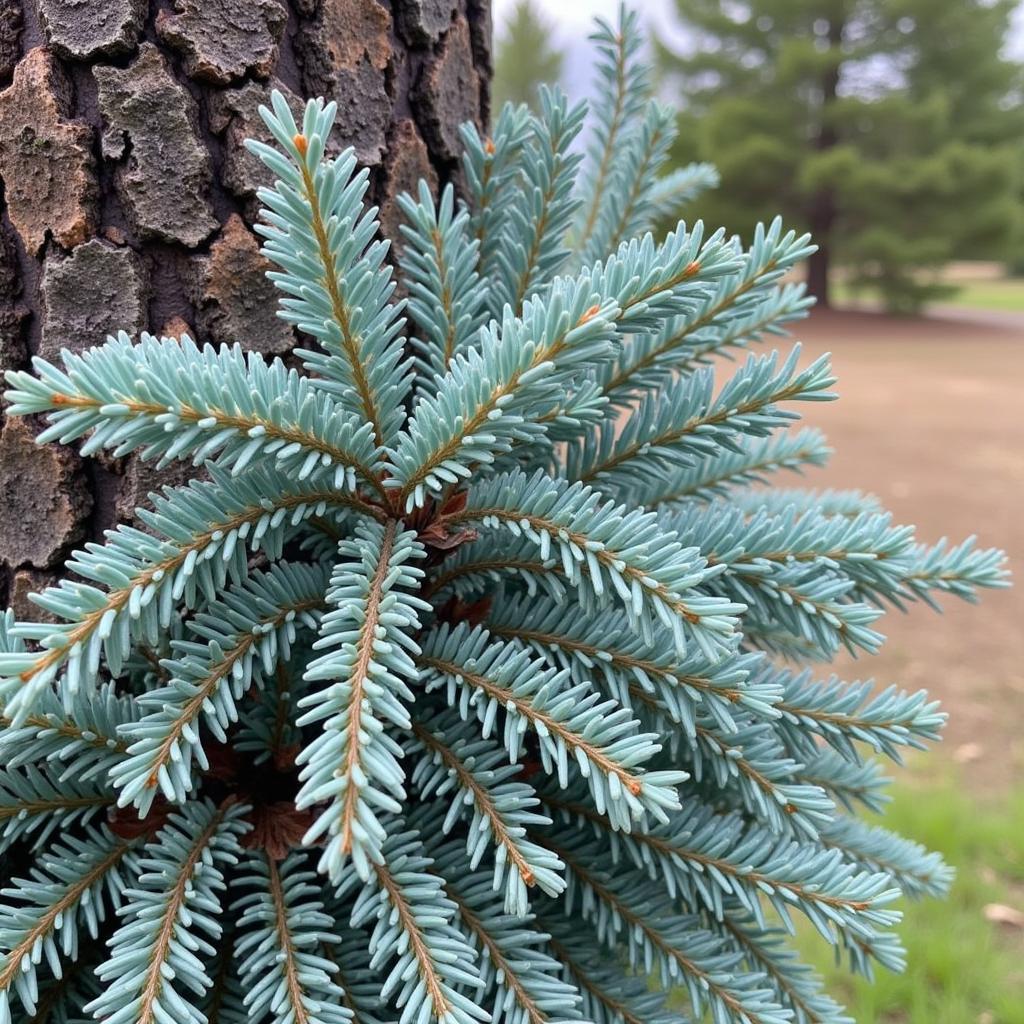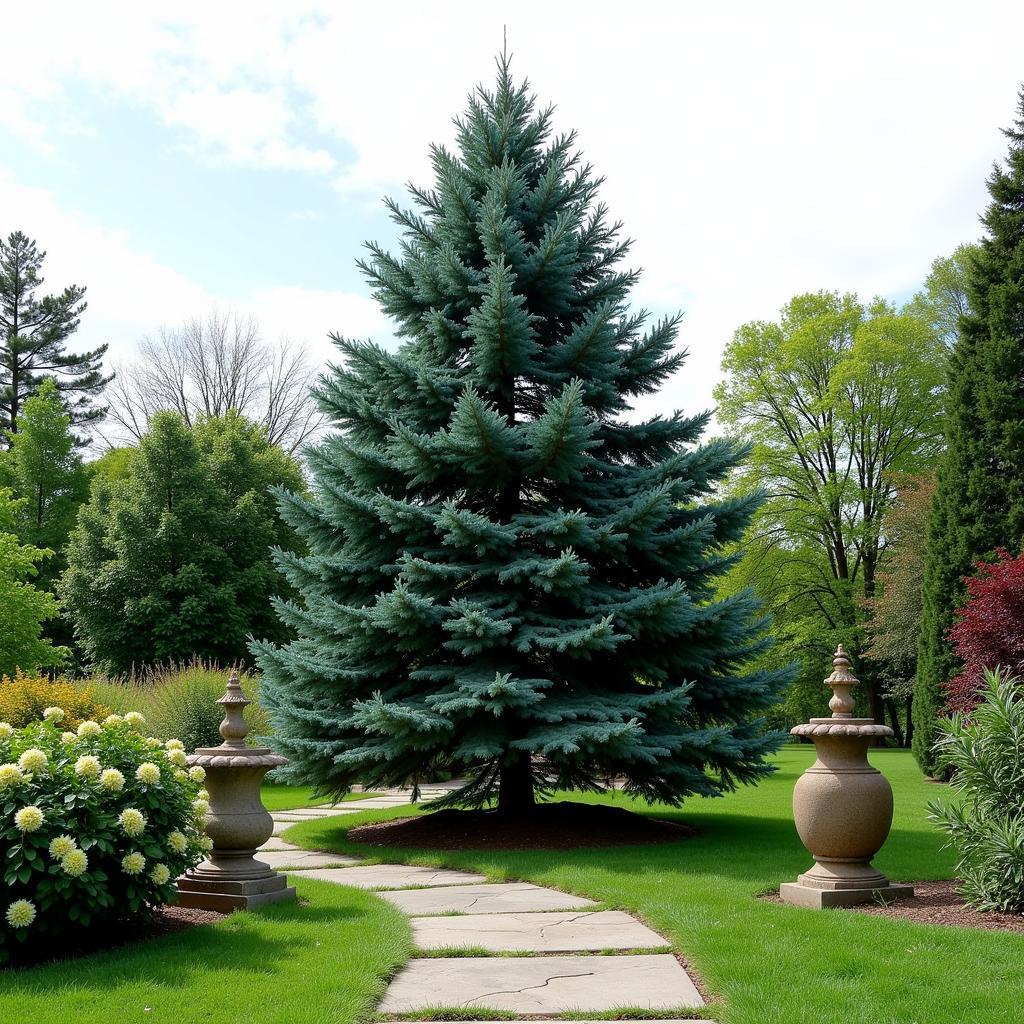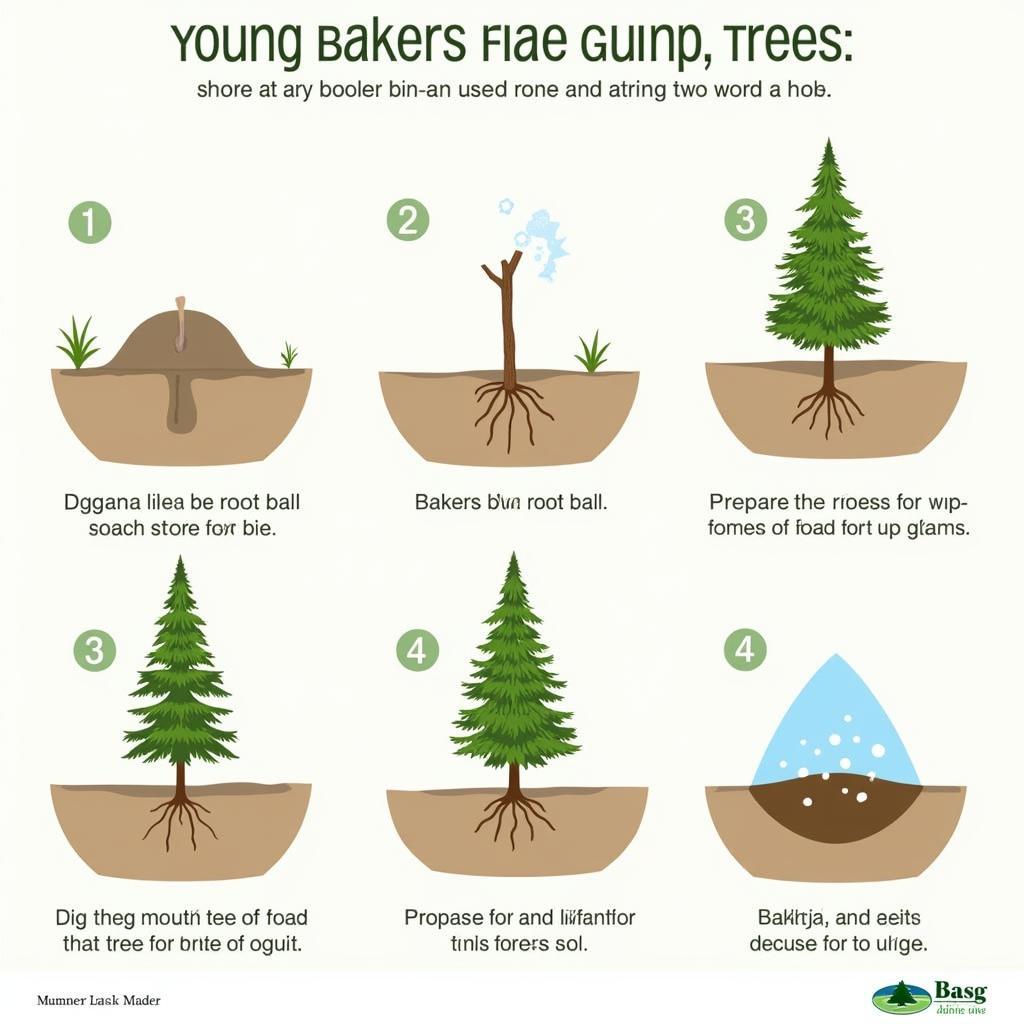Bakers Blue Spruce: A Comprehensive Guide
October 22, 2024The Bakers Blue Spruce, scientifically known as Picea pungens ‘Glauca’, is a popular evergreen conifer prized for its striking silver-blue foliage and pyramidal shape. This comprehensive guide will explore everything you need to know about Bakers Blue Spruce trees, from their unique characteristics and ideal growing conditions to tips for planting and care.
 Bakers Blue Spruce Tree Characteristics
Bakers Blue Spruce Tree Characteristics
Identifying Bakers Blue Spruce
Bakers Blue Spruce trees are easily recognizable by their distinctive features:
- Color: Their needles boast a stunning silver-blue hue, setting them apart from other spruce varieties.
- Shape: They typically exhibit a classic pyramidal growth habit, with a strong central leader and tiered branches.
- Needles: The needles are stiff, sharp, and four-sided, ranging from ¾ to 1 ½ inches long.
- Cones: Bakers Blue Spruce trees produce light brown cones that are cylindrical in shape and measure 2-4 inches long.
 Bakers Blue Spruce in Landscape Design
Bakers Blue Spruce in Landscape Design
Ideal Growing Conditions
To thrive, Bakers Blue Spruce trees require specific environmental conditions:
- Sunlight: Plant in a location that receives at least 6 hours of direct sunlight per day.
- Soil: Well-drained, slightly acidic soil is ideal. Amend clay soils with organic matter to improve drainage.
- Water: These trees prefer moist soil but can tolerate some drought conditions once established.
- Climate: Bakers Blue Spruce trees are hardy in USDA plant hardiness zones 2-7.
Planting Bakers Blue Spruce
Spring or early fall is the best time to plant a Bakers Blue Spruce. Follow these steps for success:
- Choose a Location: Select a spot with ample sunlight and well-drained soil. Consider the tree’s mature size (50-60 feet tall and 15-20 feet wide) when choosing a location.
- Dig the Hole: Dig a hole twice as wide and just as deep as the root ball.
- Prepare the Tree: Gently remove the tree from its container and loosen any circling roots.
- Plant and Backfill: Place the tree in the hole, ensuring the top of the root ball is level with the surrounding soil. Backfill with the excavated soil, tamping it down gently.
- Water Deeply: Water thoroughly after planting to help settle the soil and encourage root establishment.
 Young Bakers Blue Spruce Planting Guide
Young Bakers Blue Spruce Planting Guide
Caring for Bakers Blue Spruce
Once established, Bakers Blue Spruce trees are relatively low-maintenance:
- Watering: Water deeply during periods of drought, especially during the first few years after planting.
- Fertilizing: Fertilize in early spring with a balanced, slow-release fertilizer specifically formulated for evergreens.
- Pruning: Prune in late winter or early spring to remove any dead, diseased, or damaged branches.
Common Issues
While generally hardy, Bakers Blue Spruce trees can be susceptible to certain issues:
- Spider Mites: Look for fine webbing and yellowing needles. Treat with insecticidal soap or neem oil.
- Cytospora Canker: This fungal disease causes branch dieback. Prune affected branches and avoid wounding the tree.
- Needle Cast: This fungal disease causes needles to turn brown and drop. Treat with a fungicide recommended for needle cast.
Bakers Blue Spruce FAQs
Q: How fast do Bakers Blue Spruce trees grow?
A: They typically grow at a moderate rate of 1-2 feet per year.
Q: Can I grow a Bakers Blue Spruce in a container?
A: While possible, they are best suited for growing in the ground due to their mature size.
Q: When is the best time to prune my Bakers Blue Spruce?
A: Late winter or early spring is ideal, as the tree is dormant.
Need Assistance?
Contact us at Phone Number: 0915117113, Email: [email protected] or visit our address: To 3 Kp Binh An, Phu Thuong, Viet Nam, Binh Phuoc 830000, Viet Nam. We have a 24/7 customer support team.